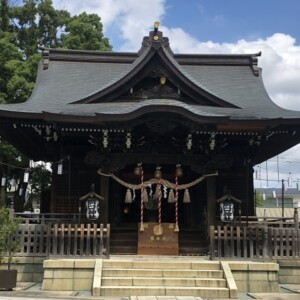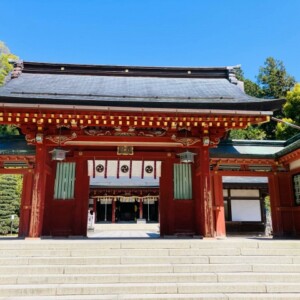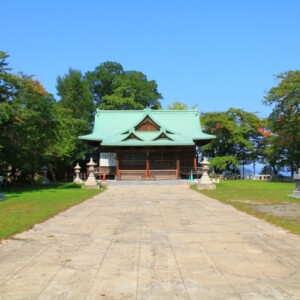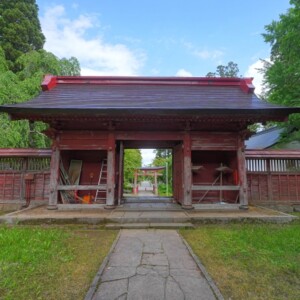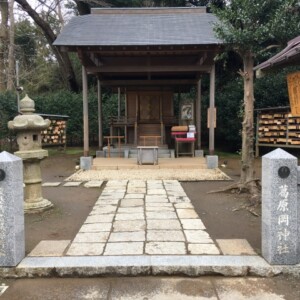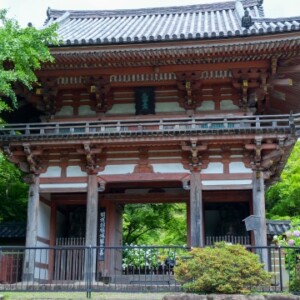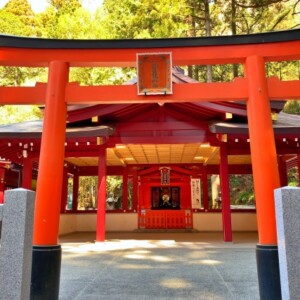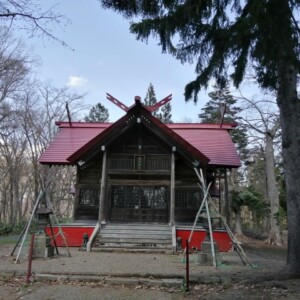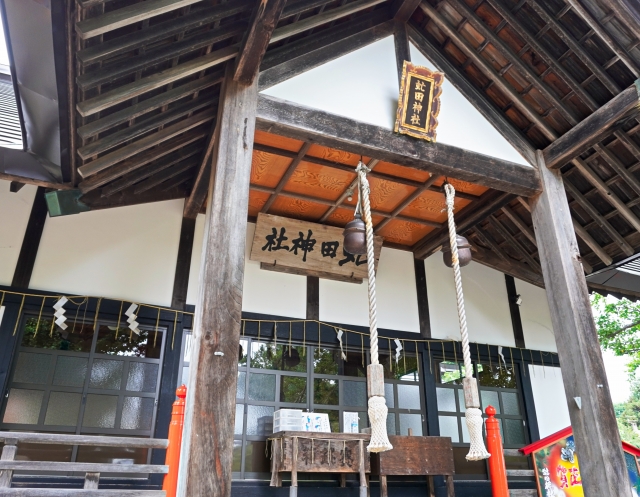
Abuta Shrine|A Complete Guide to the History of the Venerable Toyako Town Headquarters and the Charms of the Dragon Vein Power Spot
Abuta Shrine, located in Toyako Town, Hokkaido, was built in 1804 and has been loved by local people for its long history. It is also known as a powerful power spot located on the dragon vein that runs from Mt. Yotei to Mt.
Abuta Shrine Overview and Basic Information
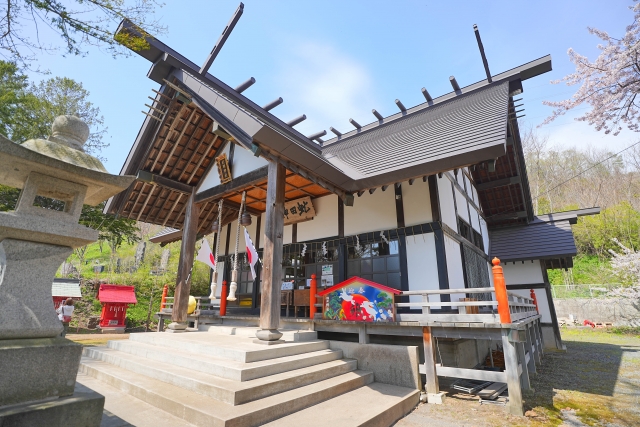
Abuta Shrine is a historic shrine that has served as the general guardian of the town of Toyako for more than 200 years, watching over the peace and prosperity of the region. Notably, it is built on a powerful geological vein that is said to be located on the dragon vein connecting Rishiri Fuji, Mt. Yotei, and Mt. Komagatake, and extending as far as Mt. By sitting near Lake Toya, known as the “dragon hole” in feng shui studies, the temple is a special place that receives the strong energy of the earth.
The current shrine pavilion was built in 1971, and its beautiful vermilion torii gate is impressive. The shrine grounds offer a panoramic view of Lake Toya and Eruption Bay, and visitors can enjoy the beautiful natural scenery of the four seasons. In addition, behind the shrine, there is a well-maintained Ryuzan Road with a monument called “Dragon’s Pearl,” which is also a popular spot where many visitors come to make a wish.
History and Origin
The founding of Abuta Shrine dates back to the first year of Bunka era (1804). It was built by Mohei Wada, a contractor of the Abuta place at that time, under the order of Akihiro Matsumae, a lord of the Matsumae domain, to pray for the opening of rice paddies and the start of fishing grounds in Abuta, and to offer divine blessings and prosperity. At the time of its construction, the shrine was built as Inari Shrine on the Tokotan (inlet) site, with the spirit of Fushimi Inari Taisha in Kyoto.
In the same year, Ebisu Shrine was also built, but it was combined with Inari Shrine in 1917. With the eruption of Mt. Usu in 1822, the shrine was moved from Tokotan to Frenai, and then to its current location with the opening of the Naganawa Line (now the JR Muroran Line) in 1923. The current shrine building was constructed in 1971, and the name was changed to the current “Abuta Shrine” in 1994.
Throughout its long history, Abuta Shrine has played an important role in praying for the development of local industries and the safety of local residents. With its background in praying for the prosperity of the fishing industry and agriculture in particular, the shrine is still known today for its blessings of prosperous business and a good harvest.
Deities and Benefits
The main deity of Abuta Shrine is Ukanomitama no Kami, the deity of Inari, who is believed to bring prosperity in business, a good harvest, and the promotion of industry. Since Ebisu is also enshrined at the shrine, it is also believed to bring safety in fishing and prosperity in business, and is especially revered by people involved in local industries.
The Akakura Shrine, the last shrine, enshrines Godai Ryujin (five great dragon deities), who is believed to guide one’s life and bring about a great marriage through his blessings. The “Ryu-en-mamori” amulet is especially popular among worshippers who wish for good marriages and guidance in life by invoking the divine virtues of the deity of the Abuta Shrine and the Five Great Dragon Deities.
In recent years, due to its aspect as a power spot located on the dragon’s vein, the shrine has been visited by many worshippers seeking for good luck, fulfillment of wishes, and replenishment of energy. In particular, making a wish with the “dragon’s bead” is attracting nationwide attention as the dragon will grant the wish.
Highlights and Features of Abuta Shrine
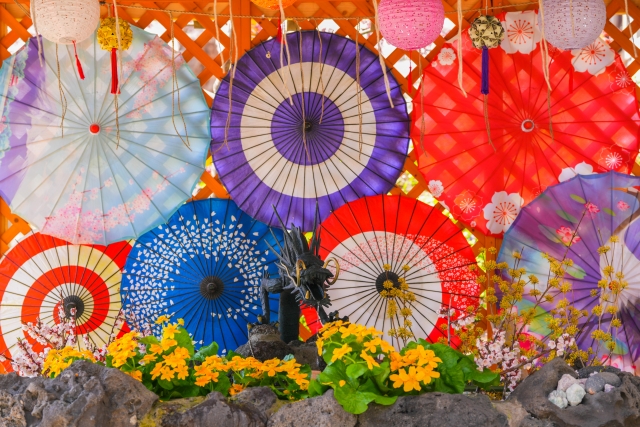
The most significant feature of Abuta Shrine is that it is recognized as one of the few power spots in Hokkaido. Located on the Dragon Vein, which is very significant in terms of feng shui, it is a place that attracts a strong magnetic field of energy and is noted by those seeking a spiritual experience.
The temple grounds are rich in nature, and visitors can enjoy the beauty of each season: cherry blossoms in the spring, hydrangea in the summer, and autumn leaves in the fall. The hydrangeas by the approach to the temple are especially beautiful and soothe the soul during summer visits. In winter, snow sometimes forms a pattern of white snakes on the pillars of the torii gate, which is a popular topic of conversation among worshippers as a natural feature of the shrine.
Attraction as a Dragon Vein Power Spot
The main reason why Abuta Shrine is considered special is its location. It is located on a ley line that aligns three famous mountains, Rishiri Fuji, Mt. Yotei, and Mt. Komagatake, with Mt. Fuji, the highest mountain in Japan, on this extended line. In feng shui studies, the line connecting these mountains is called the “dragon vein,” and is considered an important path through which the chi of the earth flows.
Furthermore, Lake Toya, created by a volcanic eruption, is a special place called “Ryu-ana” (dragon hole), which is believed to attract energy with a strong magnetic field. The location of the Abuta Shrine near this dragon hole makes it a place to receive very powerful earth energy.
Because of these geographical and feng shui characteristics, Abuta Shrine is also known as the “Ezo Fuji Sanzan Ley Line” or the “Path of Sunrise” and is increasingly recognized as a power spot. In fact, it has been featured in a professional feng shui book and has attracted so much attention that it even attracts worshippers from overseas.
Buildings and Natural Scenery on the Shrine Grounds
The most striking feature of the Abuta Shrine precincts is the beautiful vermilion torii gate. Visible from National Route 37, the large torii gate is a landmark that announces the presence of the shrine even from a distance, and can be seen from the windows of the JR Muroran Line trains, its vivid vermilion color looking especially beautiful in the natural beauty of Hokkaido.
There is a long staircase leading up to the main shrine building, which is located on high ground and offers a spectacular view of Lake Toya and Eruption Bay. The view from the hill is popular among worshippers, especially on a clear day, when they can see the mountains in the distance and feel refreshed.
The shrine pavilion is relatively new, built in 1971, but it is robust enough to withstand Hokkaido’s harsh climate while maintaining the beauty of traditional shrine architecture. The Akakura Shrine is also located on the grounds of the shrine and is dedicated to the Godai Ryujin (five great dragon deities).
Dragon Pearl Monument and Ryuzan Road
One of the most popular spots at Abuta Shrine is the “Dragon Pearl” monument, located about 15 minutes up the mountain path behind the shrine grounds. This monument, installed in 2009, is a sculpture that resembles a bead held by a dragon, and it is believed that if you make a wish here, the dragon will grant your wish.
The Dragon Mountain Path begins on the left side of the temple grounds and leads up the mountain along a rope. A walking stick is provided along the way, and the path is gently sloping and relatively easy to climb. Along the way, visitors can enjoy forest bathing and feel the energy of nature.
In the plaza where the monument is located, visitors can perform the “Musubuseki” ceremony, in which they write their wishes on the stone egg they received at the main shrine and dedicate it to the deity. This experience is popular among worshippers, especially those who wish for the fulfillment of love or a change of life. The summit also offers a beautiful view of Lake Toya, making it a special place where visitors can enjoy both a tour of power spots and a walk in nature.
Worship Guide
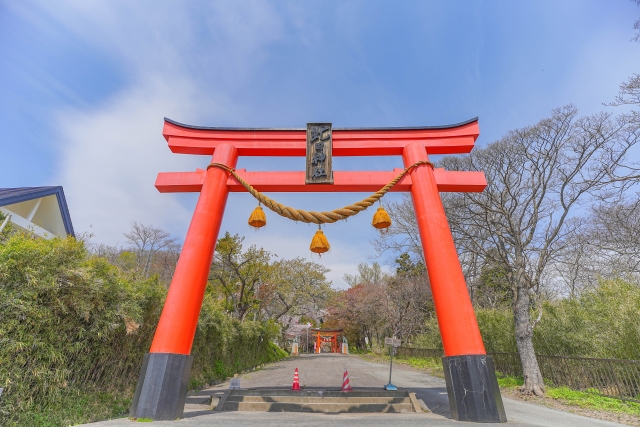
You can visit Abuta Shrine throughout the year, but we recommend that you check the opening hours of the shrine office and days when the office is closed in advance. Since March 2025, the shrine office has been closed several times a month on days when the office is closed all day. Please note that the shrine office is locked on closed days, and the restrooms behind the office are not available.
When visiting the shrine, it is important to pray wholeheartedly, feeling the special atmosphere of the shrine as a dragon-veined power spot. Since the precincts of the shrine are located on high ground, please be careful of your footing when climbing the stairs, especially in winter, when they can be slippery.
Worship Etiquette and Manners
The manner of worship at Abuta Shrine is the same as at most Shinto shrines. First, bow as you pass through the torii gate and walk down the approach to the shrine, avoiding the center of the path. After purifying your hands and mouth at the hand- and mouth-washing booth, go to the main shrine, pay the money offering, and pray in the manner of “Ni-hai (two beats for worship), Ni-hai (two beats for worship), Ni-hai (two beats for worship).
If you wish to make a wish at the Dragon Pearl Monument, pick up a musubi (stone egg) at the main shrine, write down your wish, and walk up the Dragon Mountain Path. The mountain path is a light hiking course that takes about 15 minutes one way, so it is recommended to wear comfortable walking clothes and shoes. The footing can be slippery, especially when it rains or in winter, so please do not overdo it and make safety your top priority when visiting the temple.
Photography is allowed on the grounds of the shrine, but it is important to observe common sense manners, such as not disturbing other visitors and refraining from taking pictures inside the main shrine or in sacred areas.
Annual and Seasonal Events
Various festivals and events are held throughout the year at Abuta Shrine. In particular, the New Year’s Hatsumode (New Year’s visit to the shrine) attracts many worshippers, who come to pray for peace and prosperity in the coming year. Also, special red seals are awarded from June to August as part of the summer pilgrimage, and are popular among visitors seeking beautiful seasonal red seals.
Visitors can enjoy the beauty of each of the four seasons: cherry blossoms in spring, hydrangea in summer, autumn leaves in fall, and snowy landscape in winter. Especially in summer, the hydrangeas along the approach to the temple are in full bloom, delighting the eyes of visitors along with the hana-tezui (flower watering ceremony).
In winter, snow patterns of white snakes sometimes appear on the pillars of the torii gate, which is a very rare natural phenomenon. This is a work of natural art created by strong winds that blow snow onto the pillars and slowly down the torii as the temperature rises, and is considered a symbol of good luck for visitors who are lucky enough to encounter it.
Red Seal and Charm Information
Abuta Shrine offers beautiful red seals, and the monthly red seals and special seasonal red seals are especially popular. During the summer pilgrimage period, special red seals can be received with an adorable rabbit bookmark, and the monthly God series includes “Toyotama-hime-no-mikoto” and others. Currently, the seals are available for writing, so please inquire at the shrine office for more information.
As for good luck charms, the “Ryuen-mamori” (dragon charm) is particularly popular, taking advantage of the special features of Abuta Shrine. This amulet is said to guide one’s life and bring about a great match by invoking the divine virtues of the deity of Abuta Shrine and the five great dragon deities enshrined at the Akakura Shrine, the shrine’s final location. Netsuke, a charm with a dragon holding a crystal, is also available, and is loved by many visitors as a special good-luck charm unique to this power spot.
However, depending on the time of year, there may be a shortage of good luck charms and other items awarded. Currently, the distribution of glass-made white snakes (large and small) and Abuta Inari-mamori are suspended or suspended, so we recommend that you call in advance to confirm if there is a particular item you are looking for.
Access and Visitor Information
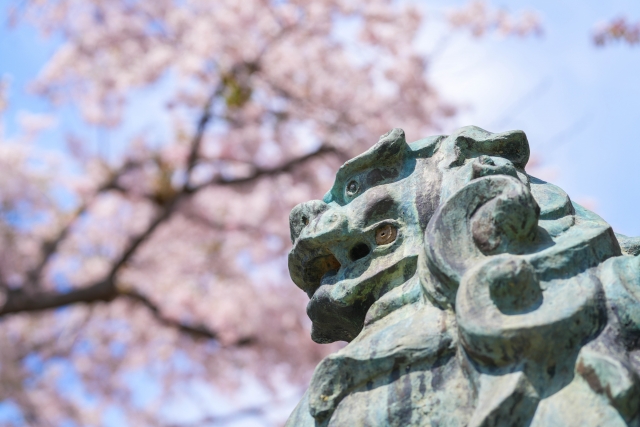
Abuta Shrine is located in the center of Toyako Town, Hokkaido, and is easily accessible by public transportation or private car. Located along Route 37, it is also possible to stop by during a road trip.
The shrine is located on high ground and offers beautiful views of Lake Toya and Eruption Bay, allowing visitors to enjoy the magnificent nature of Hokkaido as they visit the shrine. The shrine is also located near tourist attractions such as Lake Toya Onsen and the Mt. Usu Ropeway, making it easy to incorporate the shrine into a sightseeing route.
Transportation Access
The closest station to Toya Shrine is Toya Station on the JR Muroran Line. It is about a 7-minute walk or 2-minute drive from Toya Station, making it very accessible. From the station, cross the railroad crossing on the Choumanbe side of Toya Station and turn onto Route 37 to the mountain side. You will see a long staircase and a vermilion-colored torii gate just ahead of the railroad tracks, so you can arrive there without getting lost.
If you are coming by private car, you can directly access the shrine from National Route 37. It takes about 2 hours from the Sapporo area and about 1 hour and 30 minutes from the Hakodate area. When using a car navigation system, search for “Abuta Shrine” or the address.
If you use public transportation, take the JR Hakodate Honsen Line from Sapporo Station to Nagamanbe Station, then transfer to the JR Muroran Honsen Line and get off at Toya Station. If coming from Honshu, the most common route is from New Chitose Airport via Sapporo Station.
<Address> 54 Aobacho, Toyako Town, Abuta-gun, Hokkaido, 049-5721 Japan
Hours of worship, fees, and parking information
Basically, visitors are free to enter the grounds of Abuta Shrine 24 hours a day, 7 days a week. However, the shrine office is open from 9:00 a.m. to 5:00 p.m. Please come during the office hours to receive a red seal, purchase an amulet, or offer prayers.
There is no charge for visiting the shrine itself, but a first-earning fee is required for the awarding of red seals and amulets. A first-earning fee is also required for prayers, so please inquire at the shrine office for details. A first-early fee is also required for the musubi stone used to make a wish at the Dragon Pearl Monument.
Parking is available for several cars in front of the shrine. Although it is positioned as a space for worshippers rather than a formal parking lot, it is spacious enough for ordinary visits to the shrine. However, the parking lot may become crowded during Hatsumode (New Year’s visits to the shrine) and other special events, so please consider using the nearby toll parking lot or public transportation. If you choose to take the Ryuzan Road, it will take some time to ascend the mountain, so please allow plenty of time for parking.
Reference sites
Abuta Shrine official website: http://abutajinja.holy.jp/
Hokkaido Kanko Gutabi Hokkaido: https://www.gutabi.jp/spot/detail/3330
Hotokami (Abuta Shrine page): https: //hotokami.jp/area/hokkaido/Htktz/Htktztk/Dppyg/147307/



